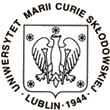

 |
 |
 |
|
Neil Rowley
IReS, Strasbourg Measuring Capture Cross Sections for Heavy-Element ProductionThe creation of superheavy elements has greatly stimulated the study of reaction mechanisms between very heavy ions. For lighter systems, the understanding of such mechanisms has been elucidated by the method of experimental barrier distributions [1]. The expression D(E) = d^2(E \sigma_cap)/dE^2 (1) where \sigma_cap is the total capture cross section and E the incident energy, gives the distribution of dynamical barriers which result from the coupling of the relative motion of the target and projectile to their intrinsic structures. For light systems, oecap is identical to the fusion cross section (formation of a compact compound nucleus, CN) and is also equal to the probability that evaporation residues are created, that is \sigma_cap = \sigma_fus = \sigma_ER. For heavier composite systems, the CN may fission (fusion-fission, FF) as well as creating evaporation residues but still satisfy \sigma_cap = \sigma_fus = \sigma_ER + \sigma_FF. However, for very heavy systems, capture may not lead to formation of a compact CN. Indeed this probability can become very small compared with the process of quasi-fission, QF. In this case \sigma_cap = \sigma_fus + \sigma_QF = [\sigma_ER + \sigma_FF] + \sigma_QF. In other words, the creation of the compound nucleus, from which superheavy elements may be born, is inhibited by the QF process. This inhibition becomes very strong for very heavy systems, where there are many experimental unknowns. The object of this work is to propose a method of determining the total capture cross section without passing through separate measurements of quasi-fission, fusion-fission and evaporation residues. It essentially uses the method of unitarity. That is, the fact that the sum of the flux in the various final channels is equal to the total incident flux. Thus capture is complementary to the flux reflected from the Coulomb barrier. For light systems, this means all quasi-elastic direct-reaction events, though for heavy systems, deep-inelastic scattering may also intervene. Barrier distributions will be obtained using the procedure of Timmers et al. [2]. Initially we shall study the system 86Kr + 208Pb (ZCN = 118). The Kr beam is relatively easy for a cyclotron accelerator and this will, therefore, serve as a test experiment for research on other very heavy systems. The experiment will be performed at the SSC at Faure, South Africa using techniques similar to those of Ref. [3]. References
[1] N. Rowley G. R. Satchler and P. H. Stelson, Phys. Lett. B254
(1991) 25 *** download abstract in ps file ***
| ||
Last modificated: 2003-09-22

